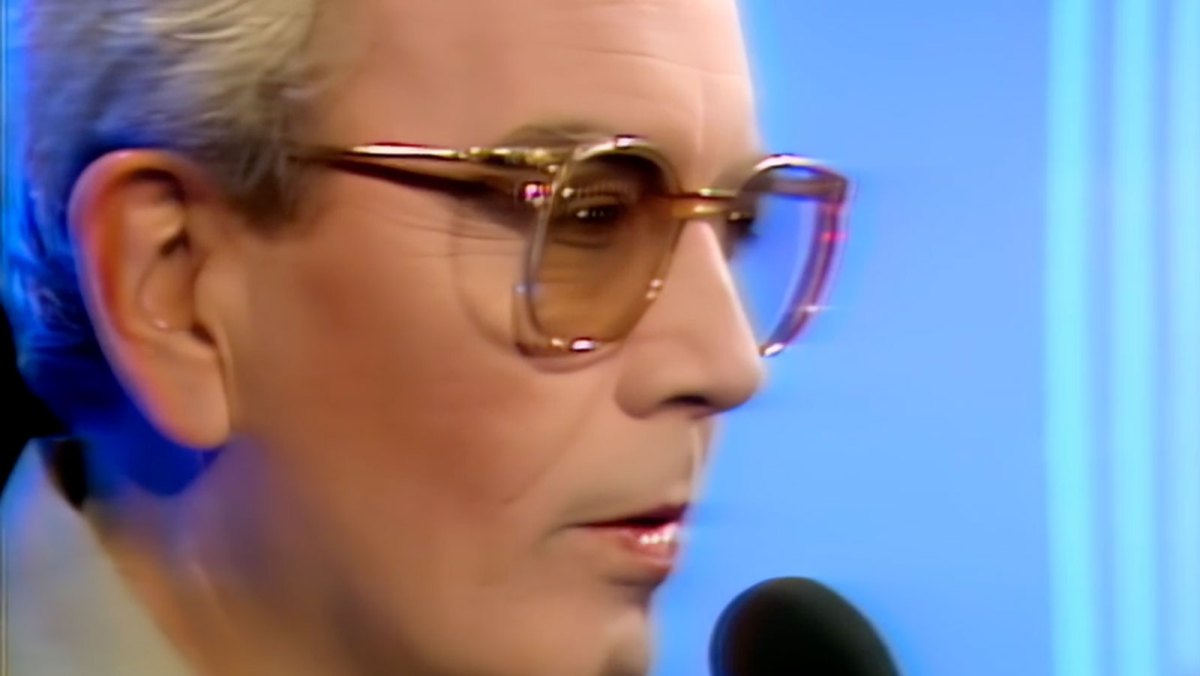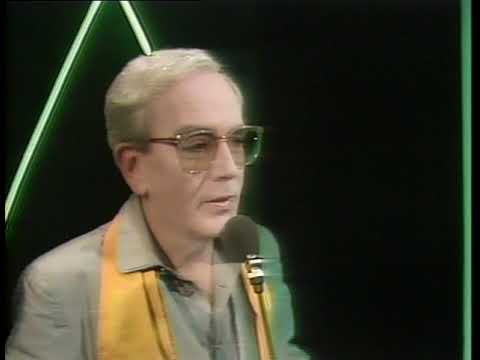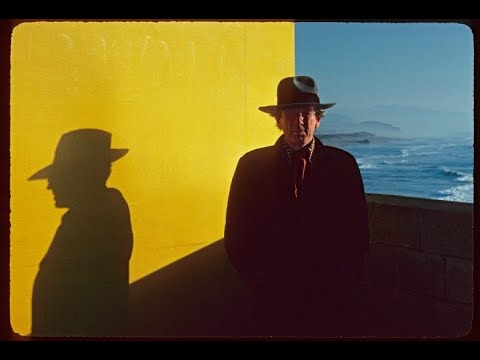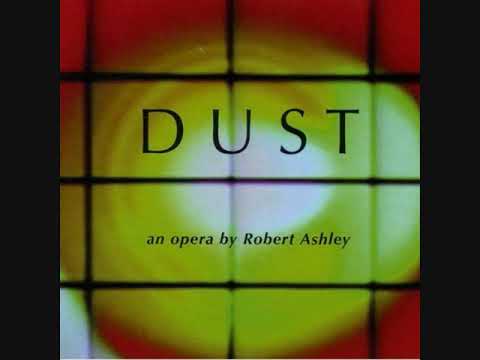Can you name a monumental four-opera series that brings together an extended, related cast of characters involved in mysterious and spiritual quests? How about a Great American Novel? Now, how about an artist who created both?
The answer is the great American composer Robert Ashley, who died in 2014 just shy of his 84th birthday, after having produced a dozen or so (depending on how you classify them) of the finest and most important avant-garde American operas. Ashley’s major works are “Perfect Lives,” the “Now Eleanor’s Idea” four-opera cycle, and his two concluding operas, “Concrete” and “Crash,” the last of which he completed shortly before his death. The upcoming edition of the Louth Contemporary Music Society’s mid-June festival includes performances of “Crash” and an excerpt from “Perfect Lives.”
Ashley was an avant-gardist and an experimentalist in that he tried out things to see if they would work, taking an idea and pushing it as far as possible. His operas use a bed of almost subliminal ambient-type music that flows at an even pace and keeps a smooth texture. The singers deliver his texts with intoned speech that can, but doesn’t always, rise into brief melodies and ensemble harmonies; either way, it always fits into an exact timing, x number of words in y seconds per bar. There are small variations here and there, but that was his method.
The latest from VAN, delivered straight to your inbox
Ashley’s operas need no staging. They are most often presented with the singers in street clothes seated at desks, speaking into microphones as they slowly turn the pages of the score. Visually, it’s most like a Congressional hearing, but without the bluster and grandstanding.
Is that opera? Definitely in a way Monteverdi would have recognized. The great aria “Possente spirto” in “Orfeo” is twice removed from speech in that it is sung and, in the right hands, includes improvisation, the formal equivalent of a stream-of-consciousness argument made to convince someone to do something. Other arias throughout the operatic literature are the public voicing of internal feelings. They work best when they convince the listener that the only way for the character to reveal these things out loud—even with the artifice that they are talking to themselves in isolated rooms, like the “Letter Scene” from “Eugene Onegin”—is by singing. So fraught and intense are the feelings that they escape mere speech and leave the body. Likewise, Ashley’s characters express inward thoughts outwardly (with occasional dialogue), or answer unheard questions. This vocal style lies between talking and “Possente spirto,” and is extremely effective, a kind of ASMR seductiveness to which the ear adapts quickly and deeply. The most jarring experience at an Ashley performance is when things come to an end and the spell breaks.
The means are an aesthetic that is both contemporary and American. American culture is avant-garde to begin with, and with that in mind, Ashley was a tremendously “normal” composer, one who worked with and backlit the vernacular culture and language he saw around him. The predominant model of new American operas since World War II has been the Verdian dramatic style sung in English, often with subjects identifiable from modern events and literature. They are newly made in an old-fashioned way. But Ashley’s people aren’t just modern: His method is the redefinition of what opera can be as a form, as long as one recognizes how musical ideas and human culture have changed since the 19th century.
Ashley’s best-known opera is “Perfect Lives,” made for television with scenes set in various commonplace locales: a park, a supermarket and a bank. The characters include a lounge singer, a bank teller, and a bartender. They do mundane things and also plan a bank robbery. Things change; they change. It’s the universe in a grain of sand, and it’s made for the ubiquitous stage of television, the medium Ashley aspired to for most of his works, which have the human scale and intimacy of a talk show.
This is opera as opera, not as opera culture. There’s no glorification of the voice, no indulgence in artifice, and no reflection of moneyed society. There’s just expression, stories, monologues, arguments, strange events, people lost in themselves and in the world around them, latched onto a single idea that they pursue into mania. It’s the realization of Harvey Pekar’s idea that everyday events can be dramatic. Your coworker greets you with a nod instead of the usual smile; you discover a book on an esoteric subject, and as you read it you feel lost from the world around you; you can’t find a parking space; you grow old and remember times from your past when you wish you had acted differently, and are ashamed and defensive to yourself.
The characters at the center of the “Now Eleanor’s Idea” series come out of an episode of “Perfect Lives,” where they briefly appear. In the eponymous first opera, the title character travels from the Midwest to the Southwest, where she becomes a prophet in low-rider car culture; in “Foreign Experiences,” a character named Don takes a job at a small college in California, is haunted by a ghosts, and himself is drawn to someone he thinks is a prophet; in “Improvement (Don Leaves Linda)” Don abandons his wife at a highway rest stop, and she goes on to raise their son, Junior Jr., who in turn undergoes interrogation after a failed spy operation in the final opera, “eL/Aficionado.”
These stories are interested in the undercurrent of mysticism and religious mania present in American culture since the 18th century. The contemporary variety is heavily influenced by California guru culture. “There is a peculiar, eerie, indescribable loneliness in all of California … the place where the early European-American settlers, upon arriving … realized they would never get back, “Ashley wrote. “California is the end of the Earth.” Carlos Castañeda, noir crime stories under the penetrating Los Angeles sun, the search for redemptive transformation, paranoia about the government and capitalism—these are all embedded in California culture which, via movies, television and genre fiction, have become part of America’s cultural DNA.
Although a composer, Ashley was one of the finest American prose stylists of the post-World War II era, capturing not just the insanity in American life but the language of it with elegance, humor, and an ear for what the spoken word reveals. He was a cross between Elmore Leonard and Don DeLillo, and even wrote a superb, punchy genre spy/action novel called “Quicksand.” It’s a fun read—especially if you have Ashley’s dry tenor in your head—but the core of his prose is his operas, and his operas are about America: from the intellectual and spiritual ideas at its founding through the fun-house-mirror distortions of consumerism, media, and Cold War politics. They are about how easy it is to get lost both within this culture and within oneself. Doesn’t that qualify them for contention as Great American Novels?
Ashley was a profoundly moral artist, highly aware of the link between his characters’ actions and their consequences. The contrast between Wagner’s “Ring” cycle and Ashley’s “Now Eleanor’s Idea” tetralogy is instructive. The “Ring” is a massive argument for sacred love driven by some problematic ideas, including that incest is beautiful and the glorification of Wotan as a tragic-and-thus-sympathetic-figure (after he cheats, steals, and sacrifices his daughter). Every work of artistic creation is a choice of values to present to the audience, and Wagner values the ecstasy of love as long as someone else is bearing the brunt of the suffering. (This is an all-too common feature of Romantic-era operas, especially fan favorites like “Madame Butterfly,” with its suicide porn climax.)
Ashley presents completely different values. His characters are first of all identifiable as regular people, the kind you might find sitting next to you at the bar and fall into conversation with. (There’s the enticing possibility that an enterprising director might stage some of the works inside an actual bar, the performers seated in a row with the audience, the performance itself gradually emerging from the murmur of the surroundings, then fading back in at the end.) What makes these characters everyday people are their concerns: jobs, groceries, driving, arguments, and most of all the personal obsessions that they struggle to understand and explain to themselves and others. This is fundamentally empathetic and humanistic; it honors the value of individual lives, no matter how small or of how little concern to the world at large. His opera “Dust” was inspired by the homeless people who gathered and lived in the small park across from his Tribeca home. Unlike Puccini or Strauss, Ashley never manipulates his characters to serve a plot. He just lets them speak. He values his people.
This value is felt most deeply in the final two operas, which express the thoughts of one character through many voices. In “Concrete,” Ashley himself is looking back on his life: hoping to remember the important things; at times trying to be honest with himself and at others just trying to find a way to be OK with the things that happened, with what he’s done, with his failures. “Crash” jumps around through three time periods, each gradually collapsing toward the others, gently abrading and deeply moving. The final line is, “You know what I mean?” ¶
Subscribers keep VAN running!
VAN is proud to be an independent classical music magazine thanks to our subscribers. For just over 10 cents a day, you can enjoy unlimited access to over 875 articles in our archives—and get new ones delivered straight to your inbox each week.
Not ready to commit to a full year?
You can test-drive VAN for one month for the price of a coffee.





